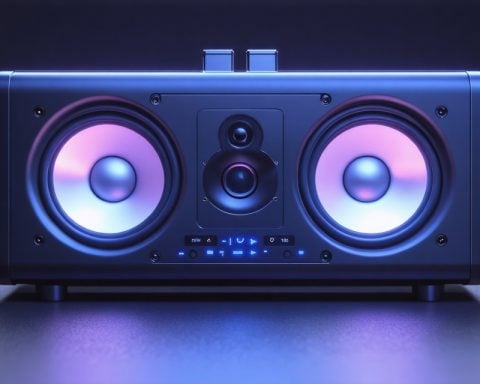The Dawn of an Aerial Revolution
In a world where traffic jams plague our daily commutes, the concept of flying cars is rapidly transforming from science fiction to reality. Aeroht, an innovative subsidiary of China’s electric vehicle maker Xpeng, is currently testing its Land Aircraft Carrier – a remarkable electric vertical takeoff and landing (eVTOL) vehicle. This cutting-edge machine can fit snugly in the trunk of a specially designed vehicle, promising to redefine urban travel.
The idea of airborne vehicles is not new. Historical attempts date back to 1917, but recent advancements are making feasible flights a tangible future. Aeroht’s maiden flight, showcased at the Guangzhou International Auto Show, created considerable buzz, especially as it glided over Shanghai’s skyline, including landmarks like the Oriental Pearl TV Tower.
Designed for ease of transport and operation, the Land Aircraft Carrier utilizes six electric rotors and features both manual and autopilot modes. A pilot’s license is required for flight, while driving the terrestrial portion only necessitates a standard car license. This versatility means that anyone can potentially take to the skies.
Analysts predict a staggering growth in urban air mobility, with a market value projected to reach $9 trillion by 2050. With China leading the charge, plans for extensive infrastructure, including 5,000 flying hubs, are underway, establishing the groundwork for a future where flying taxis might become a commonplace mode of transport.
The Future is Here: A New Era with Flying Cars
The Dawn of an Aerial Revolution
In an age where urban congestion is a growing problem, the emergence of flying cars represents a transformative leap in transportation technology. Aeroht, a subsidiary of the renowned Chinese electric vehicle manufacturer Xpeng, is making substantial strides with its Land Aircraft Carrier—a cutting-edge electric vertical takeoff and landing (eVTOL) vehicle designed to revolutionize urban travel.
Innovations and Features
The Land Aircraft Carrier stands out with its remarkable design and functionality. It boasts six electric rotors and has been engineered for seamless integration into daily life; it can even be stored in the trunk of a compatible vehicle. This feature illustrates not only innovative engineering but also foresight into practical applications for users.
Key Features:
– Dual-mode Operation: The vehicle operates in both manual and autopilot modes, accommodating a range of pilot experiences.
– Licensing Requirements: While a pilot’s license is necessary for aerial travel, users need only a standard car license for the terrestrial driving portion, making it relatively accessible.
Use Cases and Market Potential
The potential applications for flying cars extend beyond individual leisure. Urban air mobility is set to play a crucial role in emergency services, package delivery, and commuting, drastically reducing travel times and offering an alternative to overcrowded roads.
Analysts forecast that the urban air mobility market could reach an astounding $9 trillion by 2050. With China at the forefront of this revolution, significant infrastructure developments are planned, including the establishment of 5,000 flying hubs throughout its cities. This ambitious project positions China to lead the way in making airborne vehicles a common sight in urban landscapes.
Sustainability and Security Aspects
Sustainability is a pressing concern in any new transportation venture. eVTOL vehicles, like the Land Aircraft Carrier, are designed with electric propulsion systems that promise lower emissions compared to traditional vehicles. This shift not only supports environmental goals but also aligns with global trends toward greener transportation.
Security is another critical factor in the deployment of flying cars. Regulatory bodies are beginning to establish protocols and standards for eVTOL operations to ensure public safety, addressing concerns about air traffic management and vehicle maintenance.
Limitations and Challenges
While the advancements are promising, there are notable limitations. The technology is still maturing, and several challenges must be navigated:
– Regulatory Hurdles: Compliance with aviation regulations can slow deployment.
– Public Acceptance: Gaining trust in the safety and practicality of flying cars remains a challenge.
– Infrastructure Development: Building adequate air traffic control systems and landing zones requires significant investment and planning.
Pricing Trends
As the technology develops, pricing remains a key consideration. Initial costs for vehicles like the Land Aircraft Carrier are expected to be high, making them a luxury for early adopters until economies of scale can bring down prices. Future trends may indicate a shift toward affordable models as competition increases and technology advances.
For those interested in the future of urban mobility, staying informed about the latest innovations and trends will be essential. The implications of flying car technology could redefine daily commutes and reshape the urban landscape.
To learn more about the innovations in transportation, visit Xpeng.













